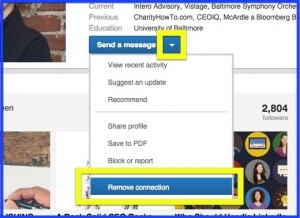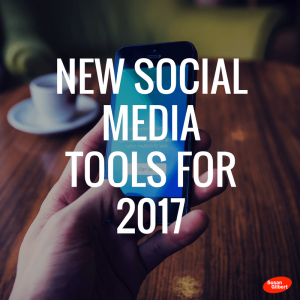What could be more exciting than knowing exactly what your customers would like to buy?
Behavioral emails use predictions based upon analyzing the content a user consumed; That is the closest the above mentioned dream scenario can get. Behavioral targeting approaches the reader at that exact critical time, which can then lead to increased engagement, developed brand reliability and improved email marketing ROI thereby.
The Predictive Intelligence Benchmark Report states that the average lift in conversion rate for sessions influenced by predictive intelligence is 22.66 percent. That’s plenty – so let’s not delay understanding behavioral emails…
What Are Behavioral Emails?
Behavioral emails as the name suggests are emails that are a response to the reader’s actions, sensing the slightest of it. Behavioral emails base their functionality on codes that go along collecting your recipient’s browsing behavior in its entirety, and thereby send emails in sync with their needs and interests. In other words, it uses observations to provide a better matching marketing solution for each individual.
Behavioral emails use observations to provide a better matching marketing solution for each individual.
Behavioral emails are generally utilized for the purpose of retargeting but are not limited to it. The simplest example of a behavioral email could be re-targeting people who did not open the email.
Here’s how getvero describes them as the sweet spot:

A Sneak Peak Into The Behavioral Email Family
The types of behavior emails extend to welcome emails, cart abandonment emails, product review requests, re-order emails, password renewals, free trial emails, cross-selling emails, re-engagement emails, anniversary renewals, etc. These emails are automatically triggered on actions such as a button click, a page scroll, an article read or a video watched; and are hence called the next level of transactional and triggered emails.
How are they different from Transactional Emails or even Triggered Emails?
The concept of triggered emails bases itself on various cues, prompts, requests, etc. triggered originally by the reader – behavioral emails do not necessarily require a purchase and only browsing for the product may suffice! Also, behavioral emails bring together the essence of triggered emails and transactional emails adding all the additional data collected as well, making it more personalized – taking it one step beyond!

How do Behavioral Emails Work?
To be able to send behavioral emails primarily requires loads and loads of user behavior data. Commence with tracking user behavior aided by a web tracking code. Briefly, a web tracking code captures the user behavior based on an established set of rules that go something like – ‘If the prospect meets a certain pre-defined criteria – take a special pre-defined action’ automatically routing the user to Program X, Y or any of the many, based on the user’s behavior.
Data gathering can be facilitated by free tools like Google Analytics to start with; however moving towards tracking individual user behavior would require resorting to advanced tools like MixPanel, KISSmetrics, etc. that give access to data triggered platforms and help you send emails based on those data sets as well.
Behavioral emails require much user behavior data. Start tracking user behavior using a tracking code.
Now that the basics are explained, Let’s email as a response to the user’s behavior!
Behavioral Data Sets Email Types How It Works?
1. Emails opened, emails not opened, offers responded to, last interaction, responding frequency, bounced, open times, etc. are all data sets of email receiving behavior The pleasant re-engagement emails to the exciting ‘full of deals’ emails! Such emails aim at gentle persuasion to email non-openers as turning inactive users into active users is one of the easiest ways to be able to generate engagement and thereby: ROI.
2. Twitter mentions, navigating to website from social platforms, message sharing, re-tweeting, etc. are all data sets of user’s behavior across social media platforms The courteous thank you emails to the rewarding milestone emails. Such emails increase ROI in the long term by relationship building and offering rewards for the same.
3. Websites visited, links opened, products browsed, content viewed or downloaded, session duration, keywords searched, number of pages used, forms filled, search query, etc. can be included under data sets of user’s past browsing behavior The thoughtful ‘you may also like’ emails to the caring ‘here is your solution; emails! Such emails aim at recommending related products or a solution to the readers from their digital behavior. It is here where promotional email marketing takes the data-driven leap to boost sales based on gauging the likes & dislikes of the readers to give a little nudge to the buying cycle.
4. Campaign responses, campaign membership, subscription renewals, unsubscribes, etc. are all data sets of user’s behavior towards email campaigns The instructional welcome emails to the passive ‘sorry! you had to leave’ emails! Such emails are utilized to acquaint the new users who have just come on board; and need to be done right – to build a long term subscriber relationship; only then will they be able to generate ROI for your business.
5. Purchase history, deposits, withdrawals, cart abandonment, session duration for a specific product link, etc. falls under the data sets of buyer behavior The assertive ‘oops! – you left your cart with us’ emails to the ambitious cross-selling emails Marketing Land states “more than half of cart retrieval emails are opened, and over a third of cart retrieval emails result in purchases.” Such emails display the exact product that was in the cart and requests the subscriber to continue the checkout process – boosting your email ROI.
Getting Behavioral Emails Right:
- Make sure the email has something to deliver – and has something else to offer that is relevant!
- Set expectations of more emails that will bear more value – to form the habit!
- Browsing history is a real sales tool – use it to be as relevant as you can!
- Reward people for their wanted behavior (constant engagement in this case) through offers, deals, etc.
- Reinforces the value of the product you are delivering with a convincing email copy to go with it.
- Send behavioral email messages at key points in the subscriber lifecycle – this never goes wrong!
- Cart abandonment emails if used well – can increase the ROI manifold.
But, before you jump start with behavioral email service provider, check out if you truly require a behavioral email marketing service.
Once you do begin using this technique – let us know how behavioral emails worked for your email campaigns in the comments area below.
(191)






